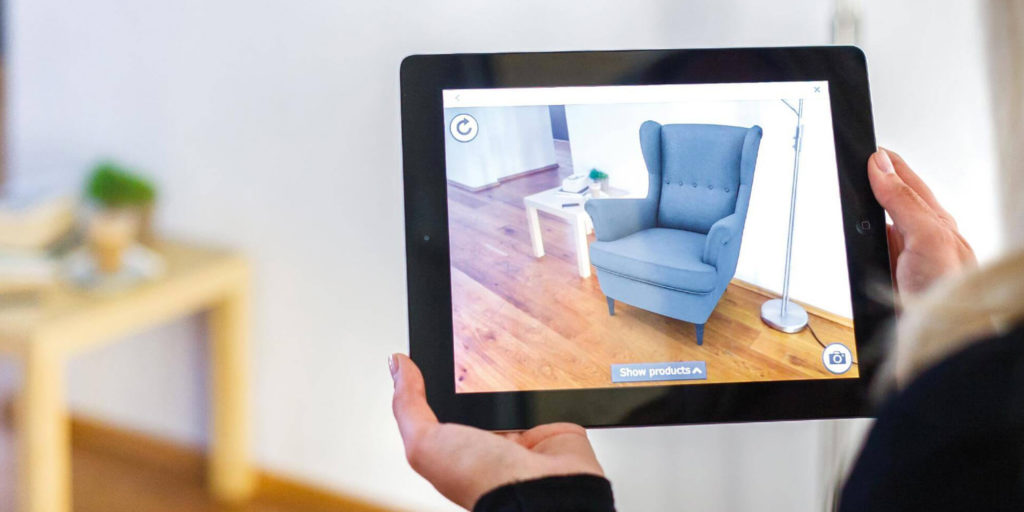The Rise of Augmented and Virtual Reality in Retail

Virtual Reality (VR) and Augmented Reality (AR) are certainly a pair of buzzwords that have been picked up heavily in the last couple of years. Significant interest perhaps catapulted these technologies into the mainstream world, and perhaps then into retail, in March 2016 when Facebook announced it was acquiring the then up-and-coming startup Oculus. A few months later, the instantly viral, augmented reality mobile game “Pokemon Go” took over the world – this game has now been downloaded a huge 650 million times!
Augmented and virtual reality is expected to generate a massive $120 billion by 2020. On mobile devices, customers no longer need to download an application to experience AR for instance. In AR/VR marketing this is a turning point as the barrier to view and interact with advertisements are eliminated. Below, we’ve shared a few verticals that are embracing the VR/AR technology already and seeing great success.
Luxury
Prada
Prada created an immersive VR app that transports a user to an opulent, fantastical house of mirrors. The app drops a user into a darkened mansion. Wild reeds and gargantuan flowers sprout from the slick checkered floor, users are encouraged to walk through the dreamscape, and even get to “bump” into actors like Mia Wasikowska or Ansel Elgort.
Burberry
Last year, Burberry leveraged Apple ARKit to create an augmented reality experience on the brand’s mobile app. When a user opens the in-app camera, the world onscreen is populated with quirky illustrations by artist Danny Sangra: crowns, raindrops, clouds, camera flashes, and speech bubbles. This activation drove Burberry’s app downloads and encouraged customers to engage with the brand on its own turf, rather than on reseller sites. The campaign’s shareability and social-friendliness organically turned users into brand advocates.
Swarovski
Swarovski and Mastercard teamed up to give prospective customers a private virtual tour of a high-end home, decked tastefully in Swarovski. A user hovering their focus over an item sees a pop-up item description and option to purchase.
This virtual reality activation is the first time that a checkout interface has been deployed seamlessly within the VR experience itself. There’s no need to save items for later, no switching between devices – with a simple nod, that crystalline leopard statuette can be yours. Mastercard reports that the average time spent in the Swarovski activation is a staggering nine minutes. The CEO of YouVisit, the platform that powered the checkout flow for Mastercard, said:
If you can get someone to engage with you for nine minutes, why do you want them to go somewhere else to complete the purchase?
Furniture
When shopping for pieces of furniture, it’s typically tricky to picture how that piece will look in your home. Trying to imagine dimensions and arrangements becomes problematic and makes the customer’s shopping experience less than ideal. AR/VR solves this by allowing customers to virtually place objects in the home and evaluate how they look without ever having the physical object delivered. Customers can virtually test items in their homes, then make an in-store purchase for pickup or buy directly online.

IKEA
Furniture giant IKEA did exactly this when they launched the IKEA Place app which lets customers see exactly how more than 2,000 furniture items would look – and fit – in their homes. Using the app, furniture is correctly sized down, right to the millimetre, and customers can walk right up and get a close-up look at fabrics and colours.
We found out through research that some customers weren’t confident about buying, so this is aimed at making that experience easier for them. We’re really right at the beginning of the big bang with AR and understanding just how it can make everyday life better for people. Michael Valdsgaard, Leader of Digital Transformation, Inter IKEA Systems B.V
Makeup and Beauty
Sephora
Makeup giant Sephora launched the “Virtual Artist” App which uses AR technology to let users see what certain products might look like on their own face. To do so, it uses Modiface technology to scan lips and eyes, before overlaying different lip colours, eye-shadows, false lashes, and more. The aim of the app is to boost eCommerce sales, with beauty consumers typically driven in-store due to doubts about what products will look like in real life. The app received mixed reviews, as it’s of course no match for how a product feels on actual skin, however, there is an impressive amount of products to try out and it also serves as a bit of fun for consumers – hopefully paving yet another way for beauty brands to test these technologies in their market.